Andrew Barton "Banjo" Paterson, CBE (17 February 1864 – 5 February 1941) was an Australian bush poet, journalist and author. He wrote many ballads and poems about Australian life, focusing particularly on the rural and outback areas, including the district around Binalong, New South Wales, where he spent much of his childhood. Paterson's more notable poems include "Waltzing Matilda", "The Man from Snowy River" and "Clancy of the Overflow" .
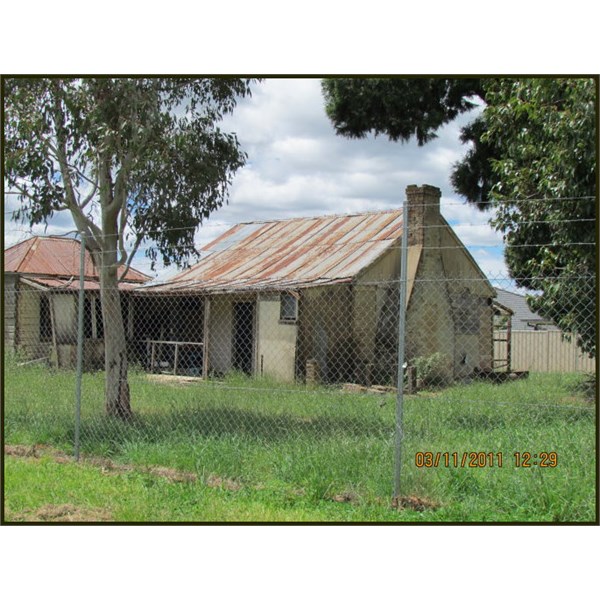
The Narrambla Cottage before Restoration
He was born at the property "Narrambla", near
Orange, New South Wales, the eldest son of Andrew Bogle Paterson, a Scottish immigrant from Lanarkshire, and Australian-born Rose Isabella Barton, related to the future first Prime Minister of Australia Edmund Barton. Paterson's family lived on the isolated Buckinbah Station near Yeoval NSW until he was five when his father lost his wool clip in a flood and was forced to sell up. When Paterson's uncle
John Paterson died, his family took over
John Paterson's
farm in Illalong, near Yass, close to the main route between
Melbourne and
Sydney. Bullock teams, Cobb and Co coaches and drovers were familiar sights to him. He also saw horsemen from the
Murrumbidgee River area and
Snowy Mountains country take part in picnic races and polo matches, which led to his fondness of horses and inspired his writings.
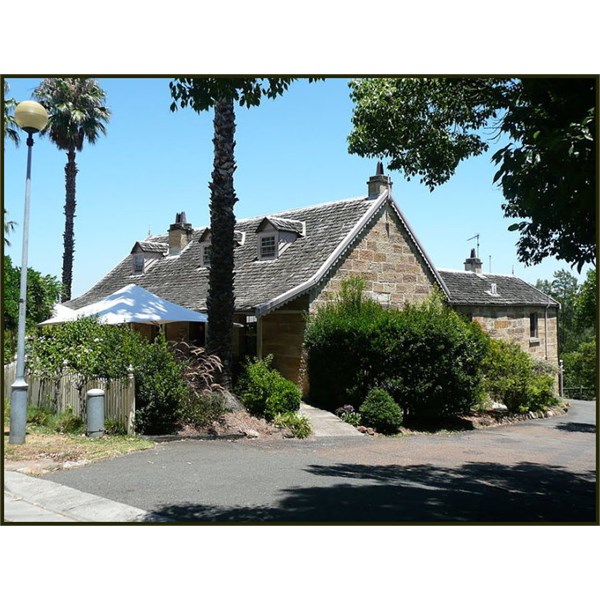
The Gladesville cottage Rockend, where Paterson lived in the 1870s and 1880s
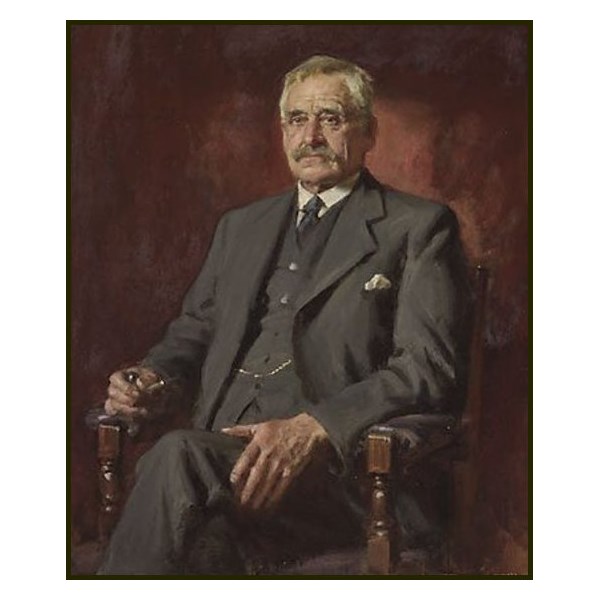
John Longstaff's portrait of Banjo Paterson, winner of the 1935 Archibald Prize
Paterson's early education came from a governess, but when he was able to ride a pony, he was taught at the bush school at Binalong. In 1874 Paterson was sent to
Sydney Grammar School, performing
well both as a student and a sportsman. During this time, he lived in a cottage called Rockend, in the suburb of Gladesville. The cottage is now listed on the Register of the National Estate. He left the prestigious school at 16 after failing an examination for a scholarship to University of
Sydney. He went on to become a law clerk with a
Sydney-based firm headed by Herbert Salwey and was admitted as a solicitor in 1886.
In the years he practised as a solicitor, Paterson also started a writing career. From 1885, he began submitting and having poetry published in the The Bulletin, a literary journal with a nationalist focus. His earliest work was a poem criticising the British war in the Sudan, which also had Australian participation. Over the next decade, the influential journal provided an important platform for Paterson's work, which appeared under the pseudonym of "The Banjo", the name of his favourite horse. As one of its most popular writers through the 1890s, he formed friendships with other significant writers in Australian Literature, such as E.J. Brady, Harry Breaker Morant and Henry Lawson. In particular, Paterson became engaged in a friendly rivalry of verse with Lawson about the allure of bush life ,
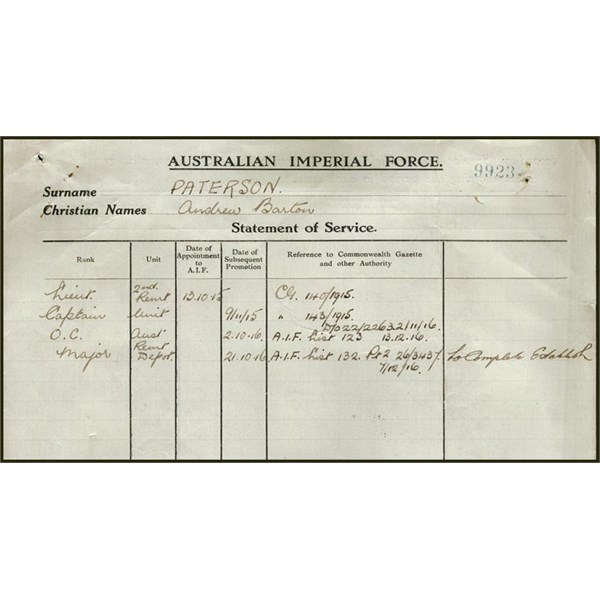
A.I.F. PATERSON, Andrew Barton Statement of Servicen
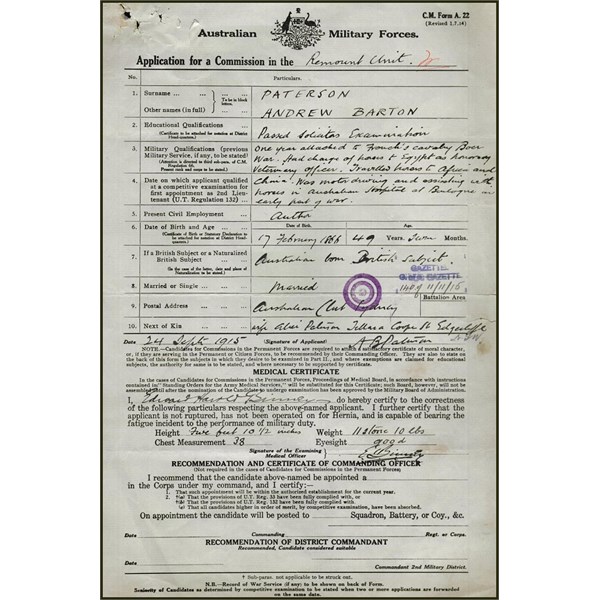
Application for a Commission in the Remount Unit
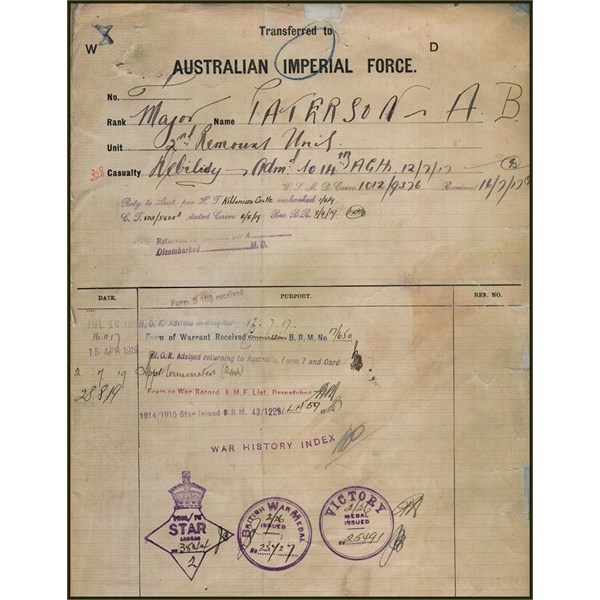
Transfer to the 2nd Remount Unit
Paterson became a war correspondent for The
Sydney Morning Herald and The Age during the Second Boer War, sailing for South Africa in October 1899. His graphic accounts of the relief of
Kimberley, surrender of Bloemfontein (the first correspondent to ride in) and the capture of Pretoria attracted the attention of the press in Britain. He also was a correspondent during the Boxer Rebellion, where he met George "Chinese" Morrison and later wrote about his meeting. He was editor of the
Sydney Evening News (1904–06) and of the Town and Country Journal (1907–08).
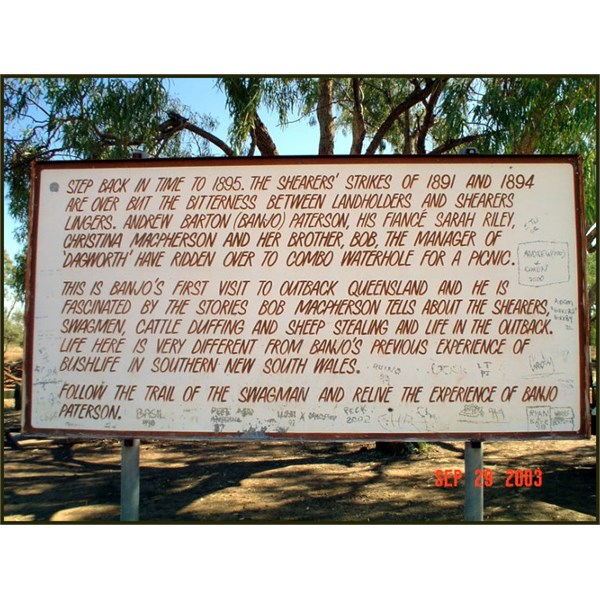
Combo Waterhole Sign
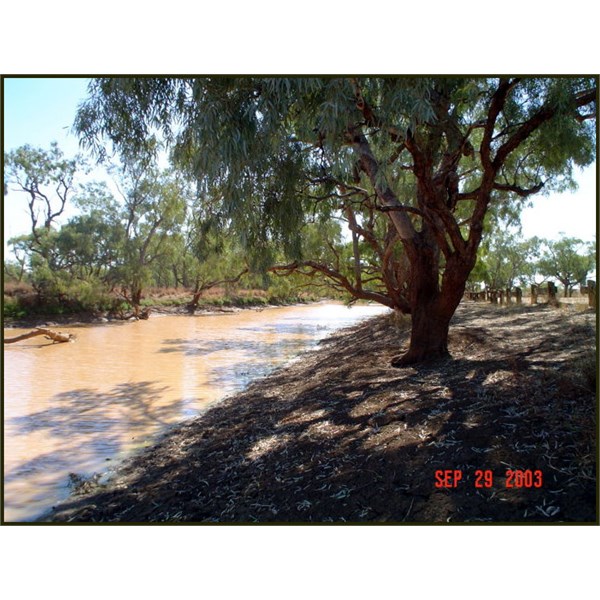
Combo Waterhole
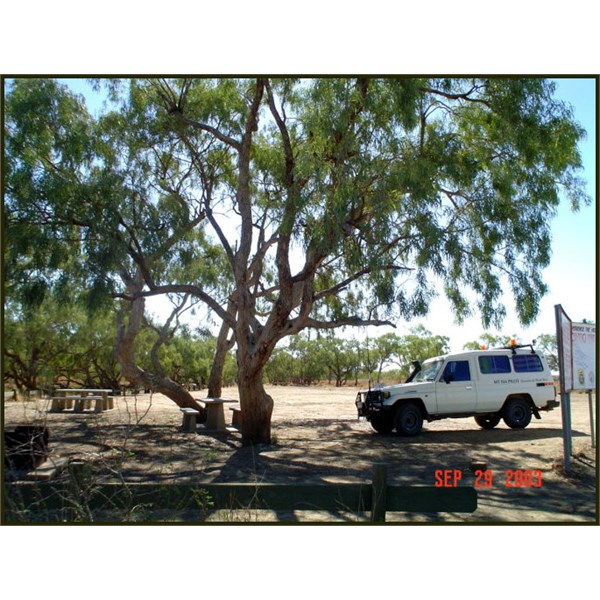
Combo Waterhole Car Park
In 1895, Paterson headed north to
Dagworth station near
Winton, Queensland. Travelling with fiancée, Sarah Riley, they met with her old school friend, Christina Macpherson, who had recently attended a race at Warrnambool in Victoria. She had heard a band playing a tune there, which became stuck in her head and replayed it for Paterson on the autoharp. The melody also resonated with him and propelled him to write "Waltzing Matilda" While there has been much debate about what inspired the words, the song became one of his most his widely-known and sung ballads.
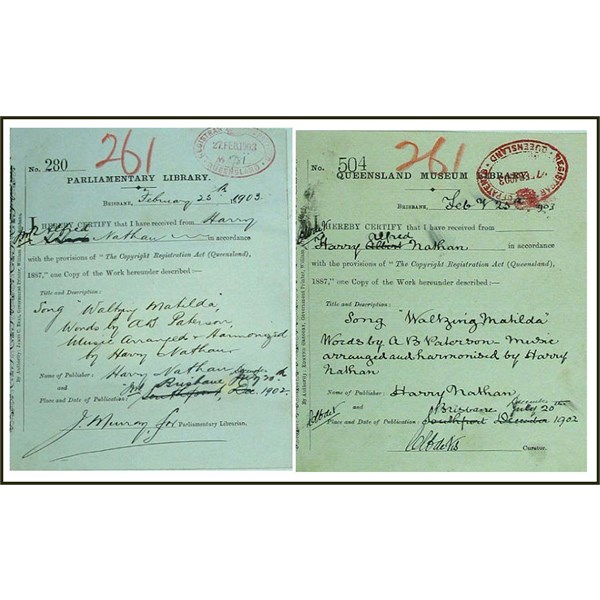
Copyright Registration for Waltzing Matilda
Although for most of his adult life, Paterson lived and worked in
Sydney, his poems mostly presented a highly romantic view of the bush and the iconic figure of the bushman. Influenced by the work of another Australian poet
John Farrell, his representation of the bushman as a tough, independent and heroic underdog became the ideal qualities underpinning the national character. His work is often compared to the prose of Henry Lawson, particularly the seminal work, "The Drover's Wife", which presented a considerably less romantic view of the harshness of rural existence of the late 19th century.
In 1908 after a trip to the
United Kingdom he decided to abandon journalism and writing and moved with his family to a 40,000-acre property near Yass.
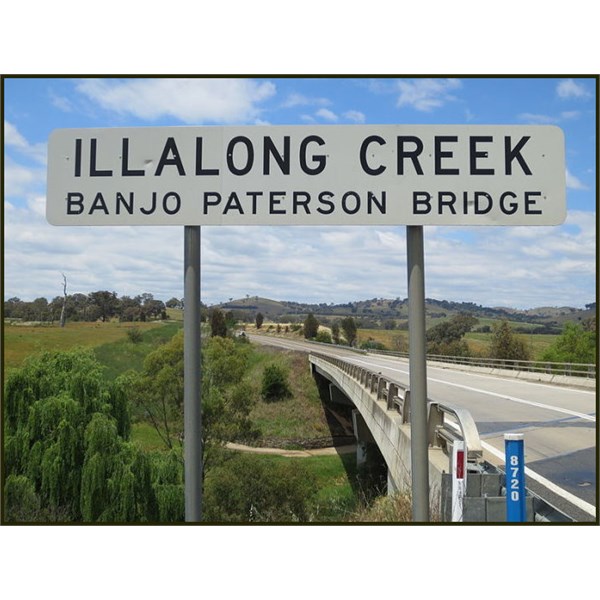
Bridge named after Banjo Paterson near Illalong
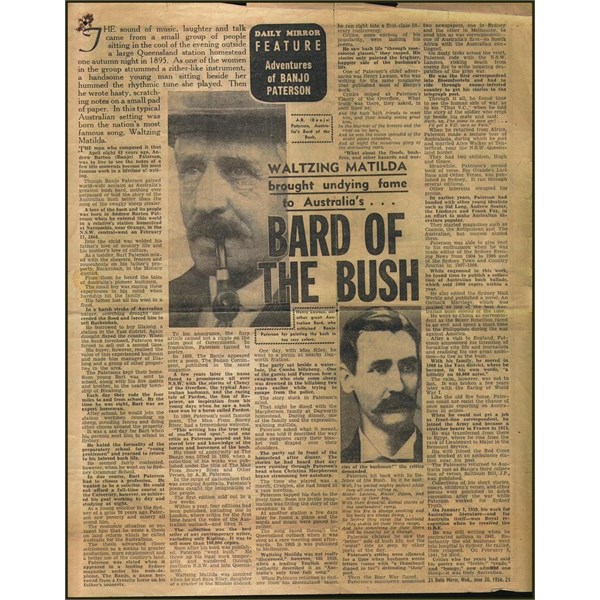
Daily Mirror Feature
In World War I, Paterson failed to become a correspondent covering the fighting in Flanders, but did become an ambulance driver with the Australian Voluntary Hospital, Wimereux, France. He returned to Australia early in 1915 and, as an honorary vet, travelled on three voyages with horses to Africa, China and Egypt. He was commissioned in the 2nd Remount Unit, Australian Imperial Force on 18 October 1915, serving initially in France where he was wounded and reported missing in July 1916 and latterly as commanding officer of the unit based in Cairo, Egypt. He was repatriated to Australia and discharged from the army having risen to the rank of major in April 1919. His wife had joined the Red Cross and worked in an ambulance unit near her husband.
Just as he returned to Australia, the third collection of his poetry, Saltbush Bill JP, was published and he continued to publish verse, short stories and essays while continuing to write for the weekly Truth. Paterson also wrote on rugby league football in the 1920s for the
Sydney Sportsman.
On 8 April 1903 he married Alice Emily Walker, of
Tenterfield Station, in St Stephen's Presbyterian Church, in
Tenterfield, New South Wales. Their first
home was in Queen Street, Woollahra. The Patersons had two children, Grace (born in 1904) and Hugh (born in 1906).
Paterson died of a heart attack in
Sydney on 5 February 1941 aged 76. Paterson's grave, along with that of his wife, is in the Northern Suburbs Memorial Gardens and Crematorium,
Sydney.
Banjo Paterson's image appears on the $10 note, along with an illustration inspired by "The Man From Snowy River" and, as part of the copy-protection microprint, the text of the poem itself.
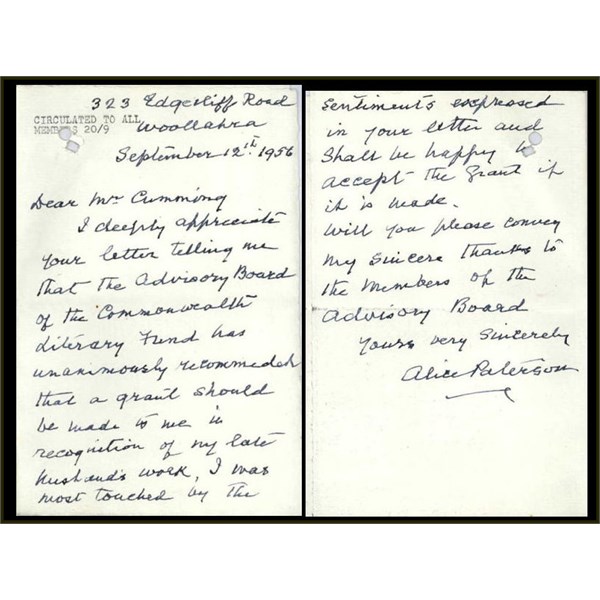
Letter from Mrs A.B Paterson

$10 Note and 70c Stamp
In 1981 he was honoured on a postage stamp issued by Australia Post.
A. B. Paterson College, at Arundel on the
Gold Coast, Australia, is named after Paterson.
The A. B. "Banjo" Paterson Library at
Sydney Grammar School was named after Paterson.
The Festival of Arts in
Orange, New South Wales, presents a biennial Banjo Paterson Award for poetry and one-act plays and there is also an annual National Book Council Banjo Award.
In 1983 a rendition of 'Waltzing Matilida' by country-and-western singer Slim Dusty was the first song broadcast by astronauts to Earth. I have made a short Waltzing Matilda from the Space Shuttle Columbia on You Tube for ExplorOz.
Slim Dusty Sings Waltzing Matilda
His Birthday this coming Wednesday